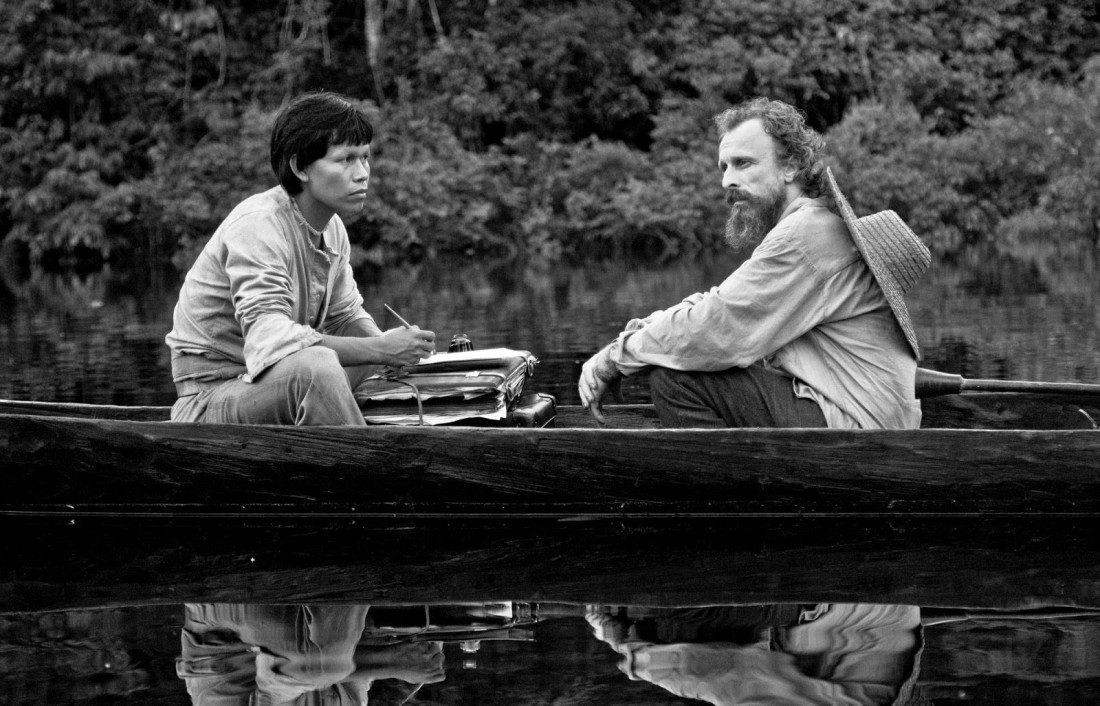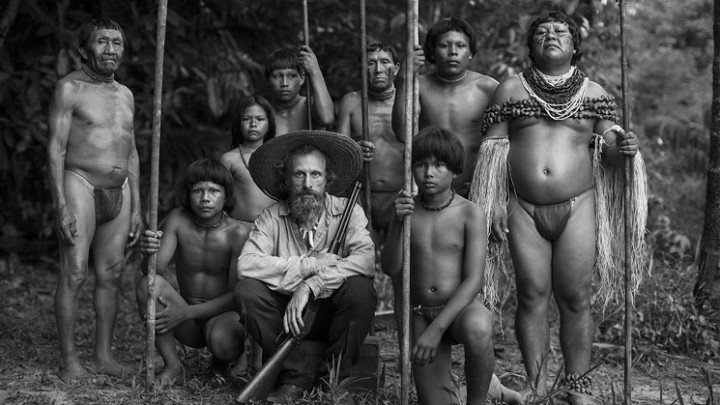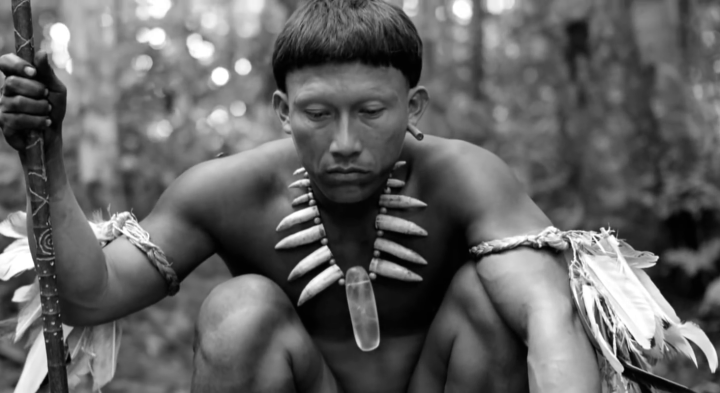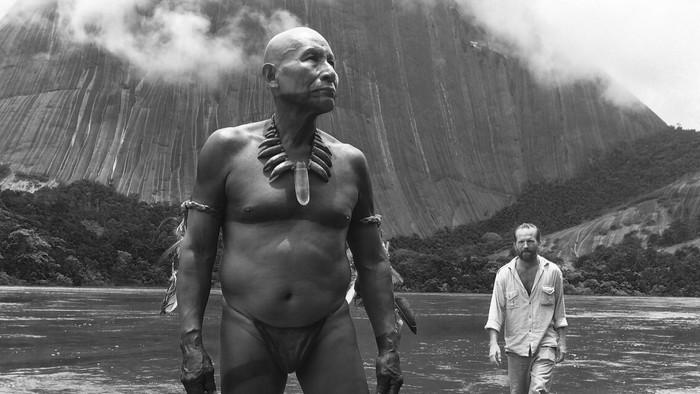Colombian filmmaker Ciro Guerra’s Oscar-nominated Embrace of the Serpent hits town this week, and it is something to behold. Filled with dream imagery, never-quite-explained symbolism, and a collection of weird (and inhospitable) characters that might have emerged from Evelyn Waugh’s A Handful of Dust or the more feverish fever dreams of Werner Herzog — with more than a little of Mr. Coppola’s Apocalypse Now around the edges. (There’s also something of Kubrick’s 2001 and Ken Russell’s Altered States in the mix.) Fascinating? You bet. But some may find it a bit much of a muchness, as they say. While I have a few minor — and one pretty major — quibbles with the film, I didn’t mind its somewhat overstuffed nature.
Photographed (primarily) in glistening black and white (with an outburst of color near the end), Guerra’s film is drawn from the journals of two 20th century ethnographers, German Theodore Koch-Grunberg (Jan Bivet) and American Richard Evans Schultes (Brionne Davis) who traveled the Amazon in 1909 and the 1940s respectively. As Guerra has it, the intercut, parallel stories are connected by a common search for a healing plant called the yakruna — and both use the same not entirely trusting shaman guide, Karamakate (played as a young man by Nilbio Torres and as an old man by Antonio Bolivar). The two stories play off each other, and both more or less take the point of view of Karamakate.
The young Karamakate initially wants nothing to do with Theo, and the pleas of Theo’s westernized guide, Manduca (Yauenkü Miguee), that without the plant the white man will die have no impact. However, Theo’s claim to be able to help Karamakate find what’s left of his tribe turns the trick, and the shaman doses Theo with some weird inhalant to get the ailing man through the trip. On the other side of the story, the older Karamakate is reluctant to help Evan — claiming to have forgotten everything he once knew and to no longer be able to speak with nature. But he, too, proves malleable in the end.
Essentially, we make the same journey twice — only completely learning the truth of the first journey near the end. We encounter the same landmarks — most notably a Catholic mission, where during the first trip we encounter indigenous orphans (thanks to the rubber barons) being force-fed Christianity by the priests. Karamakate cautions the children not to believe the priests’ “crazy tales about eating the body of their gods” — not quite the sort of thing to endear him to the Catholics. What we encounter on the later journey is perhaps even more disturbing, with its cult built around a self-proclaimed and clearly deranged messiah.
Both are strange journeys into a strange land in a strange movie — one that is much more curious than the usual anti-colonialism base of such undertakings. Oh, that’s in here, but it’s only part of what Embrace of the Serpent is about, and by no means the most important part. No, this film has something far more mystical at bottom. This is both its strength and its weak spot. Finally, the film aims for something transcendent, but it either lacks the budget or Guerra lacks the vision to pull off what’s required. It’s frankly a letdown, but it can’t quite dispel the compelling strangeness that precedes it. I’m not sure anything could. Not Rated.
Playing at Fine Arts Theatre.









Jan Bijvoet was so creepy in Borgman.
It was a great visual experience as well as I enjoyed the portrayal of the lost worldviews . I stayed until my PTSD sent me off. I missed the last fifteen minutes. However, I think the ending must have been an anticlimax.